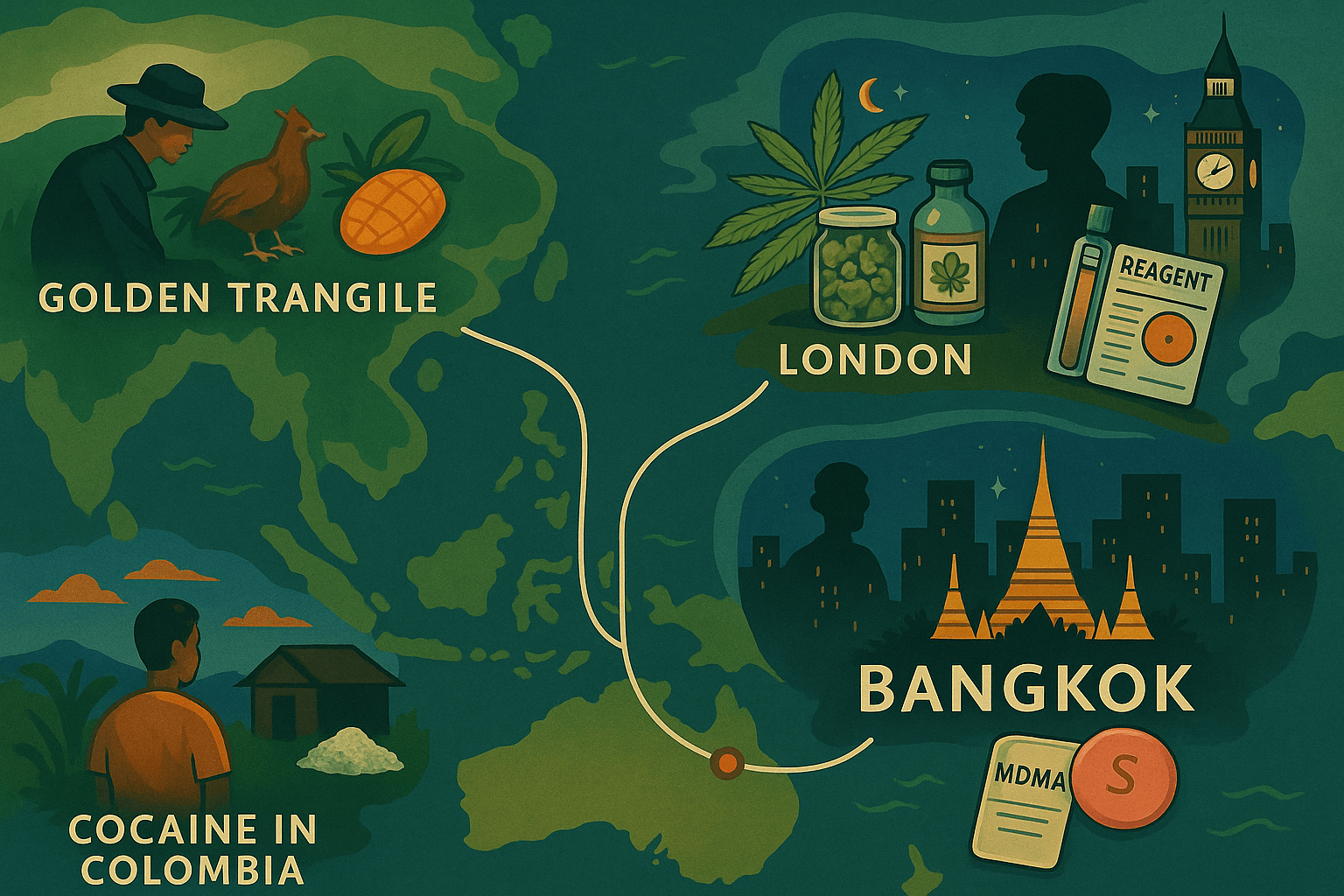The Republic of Korea has faced increasing challenges related to drug use over the past decade. The number of people who use drugs and are brought into formal contact with authorities has varied by drug type, reflecting broader trends in substance use and law enforcement efforts. This article provides a detailed analysis of these trends from 2017 to 2022, focusing on the most common substances, including methamphetamine, cannabis, and narcotics.
Trends by Drug Type (2017-2022)
Methamphetamine (Psychotropic Substances)
Methamphetamine, categorized under psychotropic substances in the Republic of Korea, has seen a significant rise in the number of users brought into formal contact with authorities. From 2017 to 2022, the number of individuals involved with methamphetamine who were formally processed by the authorities increased annually.
- 2017: Approximately 14,000 individuals were brought into formal contact.
- 2018: The number rose to around 15,500.
- 2019: This trend continued with about 16,000 individuals.
- 2020: The number slightly increased to 16,500.
- 2021: A notable increase brought the number to over 18,000.
- 2022: The highest number was recorded, with nearly 19,000 individuals involved.
Конопля
Cannabis use has fluctuated over this period, with the number of people brought into contact with authorities showing both increases and decreases.
- 2017: About 3,500 individuals were processed for cannabis-related offenses.
- 2018: The number decreased to approximately 3,000.
- 2019: There was a slight rise to 3,200.
- 2020: The number remained stable at 3,200.
- 2021: A significant increase was noted, with over 4,000 individuals.
- 2022: The number decreased slightly to around 3,800.
Narcotics (Including Heroin, Cocaine, Opium)
The category of narcotics, which includes substances like heroin, cocaine, and opium, has also seen variations in the number of people processed by the authorities.
- 2017: The number was approximately 1,500.
- 2018: This increased to about 2,000.
- 2019: A slight rise to 2,200 individuals was observed.
- 2020: The number grew further to 2,500.
- 2021: An increase brought the total to nearly 3,000.
- 2022: The highest number in this category was recorded, with around 3,200 individuals.
Analysis and Implications
The data from 2017 to 2022 show a clear trend of increasing drug-related offenses being processed by authorities in the Republic of Korea, particularly concerning methamphetamine. This trend is likely influenced by several factors, including greater availability of these substances, changing social attitudes towards drug use, and more intensive law enforcement efforts.
Метамфетамин
Methamphetamine remains the most significant drug concern in Korea, with a consistent increase in the number of users being processed. This trend suggests not only a growing problem with methamphetamine use but also possibly more effective law enforcement strategies that are bringing more offenders into the judicial system.
Конопля
The fluctuation in cannabis-related offenses suggests a more complex landscape. The initial decrease followed by a subsequent increase might indicate changing public attitudes towards cannabis or variations in its availability on the illicit market.
Narcotics
The steady increase in narcotic-related offenses, including those involving heroin and cocaine, highlights a worrying trend. This rise may be driven by the increasing availability of these drugs in Korea, as well as shifting patterns of drug use among different demographic groups.
Заключение
The period from 2017 to 2022 has seen a significant rise in the number of drug users brought into formal contact with authorities in the Republic of Korea, especially concerning methamphetamine. These trends underscore the importance of continued vigilance and adaptive strategies in law enforcement and public health to address the evolving challenges posed by drug use.
Ссылки
- Управление ООН по наркотикам и преступности (УНП ООН). Синтетические наркотики в Восточной и Юго-Восточной Азии 2023.




